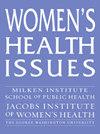Demand for Medication Abortion Through Telehealth Before and After the Dobbs v. Jackson Supreme Court Decision in States Where Abortion Is Legal
IF 2.5
2区 医学
Q2 PUBLIC, ENVIRONMENTAL & OCCUPATIONAL HEALTH
引用次数: 0
Abstract
Objective
The provision of medication abortion through telehealth accounts for an increasing share of total abortions in the United States, offering a private and affordable option for patients in both restrictive and supportive states. This study compares demand for telehealth medication abortion before and after the U.S. Supreme Court decision in Dobbs v. Jackson Women's Health Organization (Dobbs) in states where abortion access is protected, to understand how patients seeking care in supportive states may have been impacted by the landmark decision.
Methods
We compared the volume of patients receiving medication abortion from a U.S.-based telehealth service in 18 states, the sociodemographic characteristics of patients, and self-reported reasons for choosing telehealth before and after the Dobbs decision using electronic medical records from March 24, 2022–September 24, 2022. All states examined support legal access to abortion; results were stratified to compare two levels of protective abortion policies.
Results
A total of 6,296 patients received medication abortion through telehealth during the study period. Daily demand increased by 74%, from an average of 25.0 patients per day in the pre-Dobbs period to 43.4 patients per day post-Dobbs (difference 18.4; 95% confidence interval [15.4, 21.5]; p < .001). No sociodemographic differences were observed between patient populations before and after the Dobbs decision. Comfort and privacy were the most frequently selected reasons for choosing telehealth in both time periods. Concern over legal restrictions was more frequently cited after the Dobbs decision. A larger increase in demand (88%) was observed in states with fewer protections post-Dobbs compared with states with the most protective policies (68%) (p < .001).
Conclusions
Demand for telehealth medication abortion increased after the Dobbs decision in states where abortion remained legal. Telehealth provides an essential pathway to access safe and effective abortion care for a broad range of patients across different policy environments.
在堕胎合法的州,多布斯诉杰克逊案最高法院判决前后,远程医疗对药物流产的需求。
目的:通过远程保健提供药物流产在美国流产总数中所占的份额越来越大,为限制性和支持性州的患者提供了一种私人和负担得起的选择。本研究比较了美国最高法院在多布斯诉杰克逊妇女健康组织(多布斯)一案中堕胎权受到保护的各州对远程医疗药物堕胎的需求,以了解在支持州寻求护理的患者如何受到具有里程碑意义的决定的影响。方法:从2022年3月24日至2022年9月24日,我们比较了美国18个州的远程医疗服务中接受药物流产的患者数量,患者的社会人口统计学特征,以及在多布斯决定前后使用电子病历报告选择远程医疗的原因。所有被调查的州都支持合法堕胎;将结果分层比较两个级别的保护性堕胎政策。结果:研究期间共6296例患者通过远程医疗接受了药物流产。每日需求增加了74%,从多布斯之前的平均每天25.0名患者增加到多布斯之后的每天43.4名患者(差异18.4;95%置信区间[15.4,21.5];P < 0.001)。在Dobbs决定之前和之后,没有观察到患者群体之间的社会人口统计学差异。在这两个时期,舒适和隐私是选择远程保健的最常见原因。在多布斯案判决之后,人们更频繁地提到了对法律限制的担忧。在多布斯之后,与保护政策最多的州(68%)相比,在保护较少的州(88%)观察到更大的需求增长(p < 0.001)。结论:在堕胎仍然合法的州,对远程医疗药物流产的需求在多布斯判决后增加。远程保健为不同政策环境下的广大患者提供了获得安全有效堕胎护理的重要途径。
本文章由计算机程序翻译,如有差异,请以英文原文为准。
求助全文
约1分钟内获得全文
求助全文
来源期刊

Womens Health Issues
Multiple-
CiteScore
4.50
自引率
6.20%
发文量
97
审稿时长
32 days
期刊介绍:
Women"s Health Issues (WHI) is a peer-reviewed, bimonthly, multidisciplinary journal that publishes research and review manuscripts related to women"s health care and policy. As the official journal of the Jacobs Institute of Women"s Health, it is dedicated to improving the health and health care of all women throughout the lifespan and in diverse communities. The journal seeks to inform health services researchers, health care and public health professionals, social scientists, policymakers, and others concerned with women"s health.
 求助内容:
求助内容: 应助结果提醒方式:
应助结果提醒方式:


